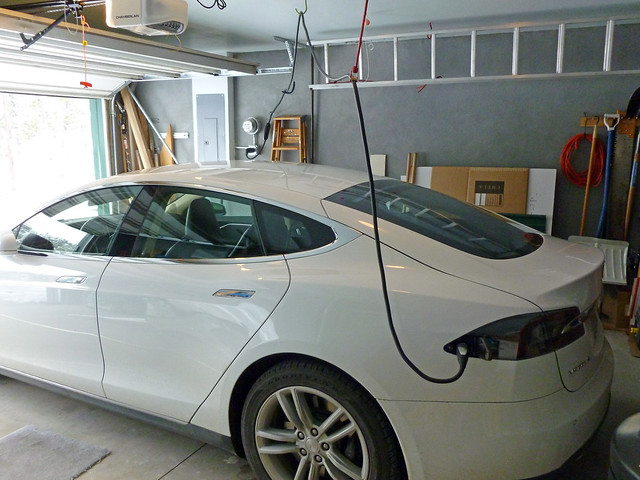...With all that said, what if I drive my battery down to 30%? What is a "danger zone" I should stay away from? I'm sure dropping the battery down low won't hurt once in a while, but I shouldn't make it a habit.
Good question. You can go down to "0%" if you have to, but do charge back up over 20% as soon as you can. Otherwise, anywhere between 20% to 80% is fine and many Model S owners routinely keep their cars charged to 90%.
Something you might not have considered: a Tesla battery will lose charge gradually as it keeps the car systems powered. This is called "vampire drain" here at TMC and it can be higher in winter if the car is using energy to keep the battery warm. So, parking the car at a very low battery level could be a problem (and the car will warn you about that). You can preheat the car, before you get in to drive, which is helpful in winter. But you need enough energy in the battery or the car needs to be plugged-in. The Tesla smartphone app will allow preheating/precooling, charge start/stop, and other things, such as remotely unlocking the car, even flashing the lights or honking the horn.
I live on a no winter maintenance dirt road. In the winter, 4wd is almost a necessity. I am saving for an AWD performance model. Insane mode at minimum. My plan is to blow the doors off of my friend's vehicles when they mock my "battery car". Because I live on a dirt road, and the roads in PA are terrible at best, I think I will go with the standard size wheel. A larger wheel might handle better, but be more prone to damage on the bumpy roads.
I also live on a dirt road, but mine is plowed so my problem is getting up my long steep driveway. You definitely need to go with AWD and the smaller wheel/higher profile tire option, if there is one on the Model 3. It would appear that you would be better off using snow tires in winter.
...I highly doubt I will ever use a public charger because of my driving habits, but others will. What is some good charging etiquette you would like new owners to be aware of? ...
If you do want to use your car for long trips you would at least want to use the Supercharger Station network. That might, or might not, be an extra cost option on the Model 3. We don't know yet. This is the current Supercharger network map, with more stations to come:
supercharge.info
The regular public charge stations figure to change a lot over the next few years, so it is hard to predict whether they would be useful for you several years in the future. For local driving you won't need them, as you suggest.
One thing to be aware of, however, is that a Tesla is so much fun to drive that you likely will end up driving it more than you expected. And with the Supercharger network allowing easy long distance travel you might find yourself doing more traveling just because you can.




